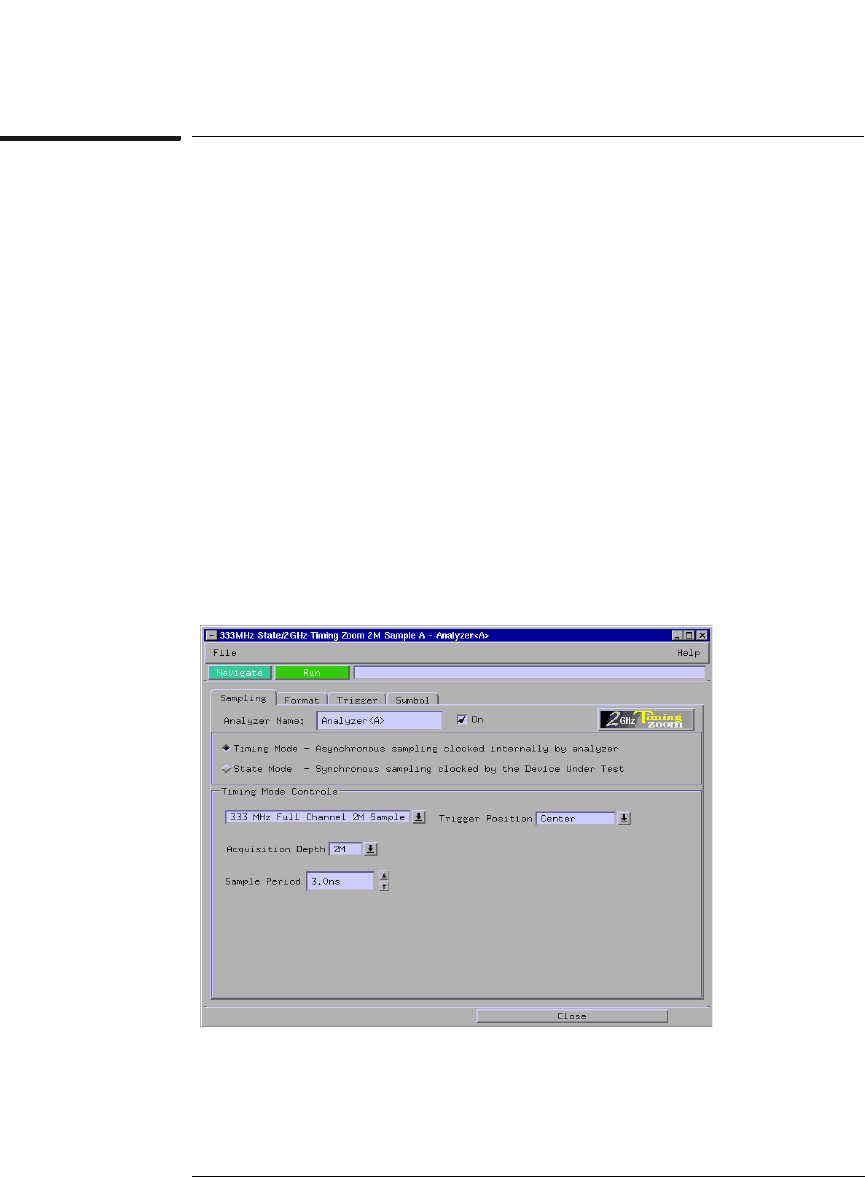Installation guide
Table Of Contents
- A Quick Tour
- Before You Begin
- Introduction to Timing Analysis: Trigger on an Edge
- Verify Pulse Widths
- Introduction to State Analysis: Trigger on an Event
- Trigger on a Sequence of Events
- Trigger on a 4 Bit Serial Pattern
- Trigger the Oscilloscope with the Timing Analyzer
- Load the RESET Configuration File
- Connect the Oscilloscope Probe and Turn the Glitch On
- Get the Analog Waveform on the Display
- Set Up the Timing Analyzer
- Set Up the Timing Analyzer to Trigger on the Glitch
- Tell the Oscilloscope When to Trigger
- Set Up the Analyzer to Arm the Oscilloscope
- Run the Timing Analyzer and Oscilloscope
- Add the Analog Waveform to the Timing Waveform
- Turn the Glitch Off
- Save Your Work
- Lesson Summary
- Using the Pattern Generator
- Load the RESET Configuration File
- Connect the Pattern Generator
- Set Up the Timing Analyzer
- Set Up the Bus Labels
- Define the Trigger Conditions: Trigger on a 1
- Set Up the Pattern Generator
- Program the Pattern Generator Output
- Start the Pattern Generator and View the Walking Ones Pattern
- Stop the Pattern Generator
- Save Your Work
- Lesson Summary
- Setting the Jumpers
- About the Credit Card Board

31
Chapter 3: Introduction to Timing Analysis: Trigger on an Edge
Set Up the Timing Analyzer
Set Up the Timing Analyzer
Because the logic analyzer can capture dozens or even hundreds of
signals, you need to organize the signals by grouping and labeling
channels. Your goal is to create meaningful labels for groups of
channels that represent the signals you are interested in. For example,
you could group the channels used to probe the address bus under the
label ADDR.
1 Click on the analyzer you have connected to the credit card
board.
2 Select Setup... from the pop-up menu to activate that
instrument.
3 Click on the Sampling tab.
4 Select Timing Mode.










